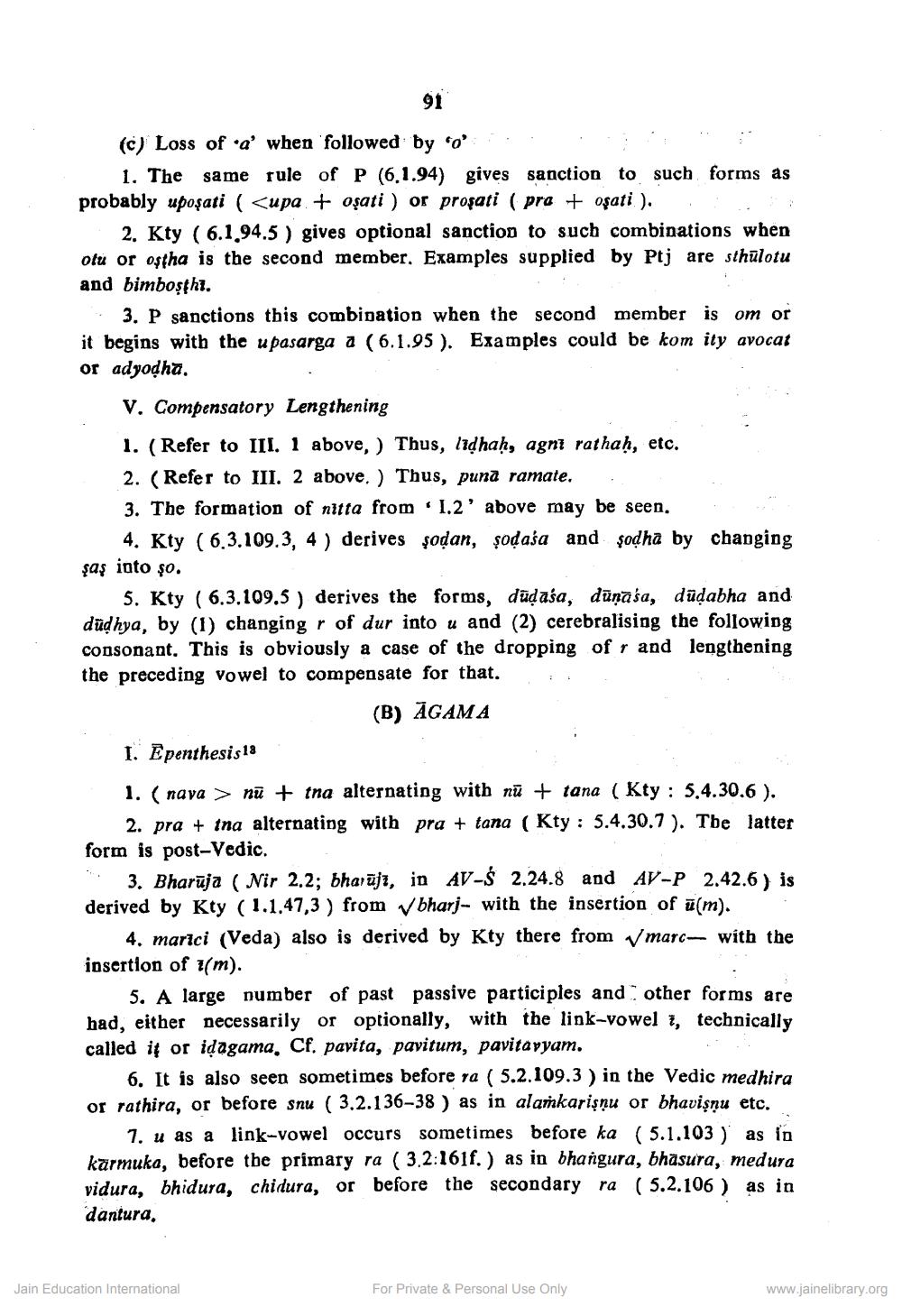________________
91
(c) Loss of a' when followed by 'o'
1. The same rule of P (6.1.94) gives sanction to such forms as probably upoşati (<upa + oșati) or proşati (pra + oşati).
2. Kty (6.1.94.5) gives optional sanction to such combinations when otu or oştha is the second member. Examples supplied by Ptj are sthulotu and bimbosthi.
3. P sanctions this combination when the second member is om or it begins with the upasarga a (6.1.95). Examples could be kom ity avocat or adyoḍha.
V. Compensatory Lengthening
1. (Refer to III. 1 above,) Thus, lidhaḥ, agni rathaḥ, etc.
2. (Refer to III. 2 above.) Thus, puna ramate.
3. The formation of nitta from 1.2' above may be seen.
4. Kty (6.3.109.3, 4) derives soḍan, şoḍaśa and sodha by changing şaş into so.
5. Kty (6.3.109.5) derives the forms, duḍaśa, dūņasa, duḍabha and dudhya, by (1) changing r of dur into u and (2) cerebralising the following consonant. This is obviously a case of the dropping of r and lengthening the preceding vowel to compensate for that.
(B) AGAMA
1. Epenthesis 18
1. (nava > nutna alternating with nu+tana (Kty: 5.4.30.6). 2. pratna alternating with pra + tana (Kty: 5.4.30.7). The latter form is post-Vedic.
3. Bharuja (Nir 2.2; bharujt, in AV-S 2.24.8 and AV-P 2.42.6) is derived by Kty (1.1.47,3) from bharj- with the insertion of u(m).
4. marici (Veda) also is derived by Kty there from marc- with the insertion of (m).
5. A large number of past passive participles and other forms are had, either necessarily or optionally, with the link-vowel, technically called it or iḍagama. Cf. pavita, pavitum, pavitavyam.
6. It is also seen sometimes before ra (5.2.109.3) in the Vedic medhira or rathira, or before snu (3.2.136-38) as in alamkariṣṇu or bhaviṣṇu etc.
7. u as a link-vowel occurs sometimes before ka (5.1.103) as in kärmuka, before the primary ra (3.2:161f.) as in bhangura, bhasura, medura vidura, bhidura, chidura, or before the secondary ra (5.2.106) as in dantura,
Jain Education International
For Private & Personal Use Only
www.jainelibrary.org




